Milan Fashion Week, the commercial-yet-conceptual one among the four fashion capitals, is turning over a new leaf. Its established fashion houses are hiring a new wave of talent whose focus is not only on creating wow moments but also on building a community of like-minded people. An early forerunner was designer-denim pioneer Diesel, owned by Renzo Rosso’s Italian OTB group, with the appointment of Belgian designer Glenn Martens as creative director in 2020.
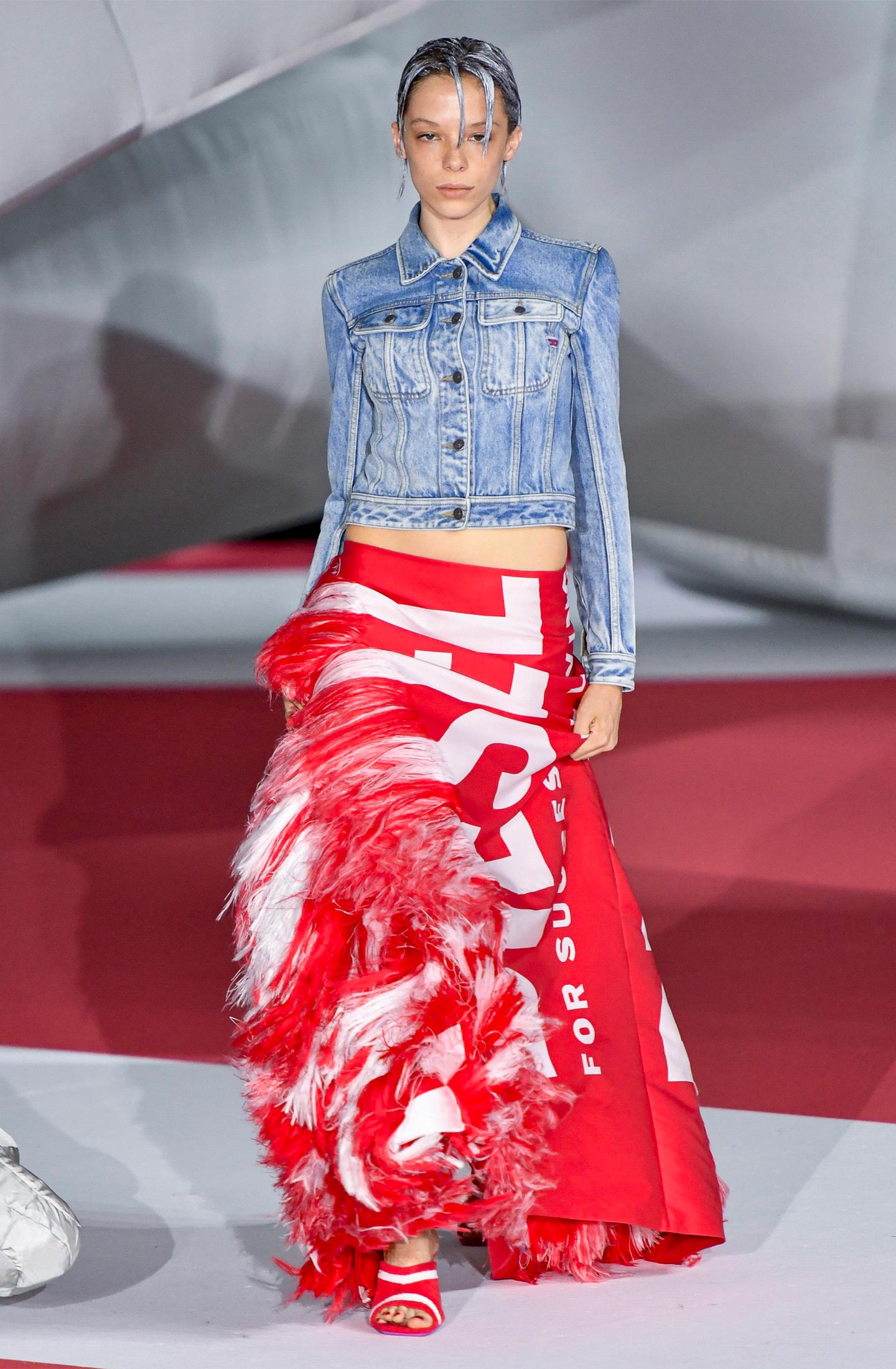
A look from the Diesel spring-summer 2023 show in Milan, attended by thousands of guests – tickets were offered to the public
“Synonymous with radicality, honesty, and optimism, Diesel helped shape the way we see the future. Its unique voice has made it an undeniable icon. Today, more than ever, I feel the need to celebrate these founding values, to build bridges through a message of hope,” said the member of the Parisian avant-garde Martens at the time of his new gig in fashion.
Even today, Glenn Martens’ shows for Diesel are among the few real hot tickets at Milan Fashion Week, while the brand’s business is skyrocketing. In numbers, the crowd at the latest spring-summer 2023 show in Milan’s Allianz Cloud arena was 5,000 people deep. What does this mean? Diesel has become the brand of choice for the young and hot.
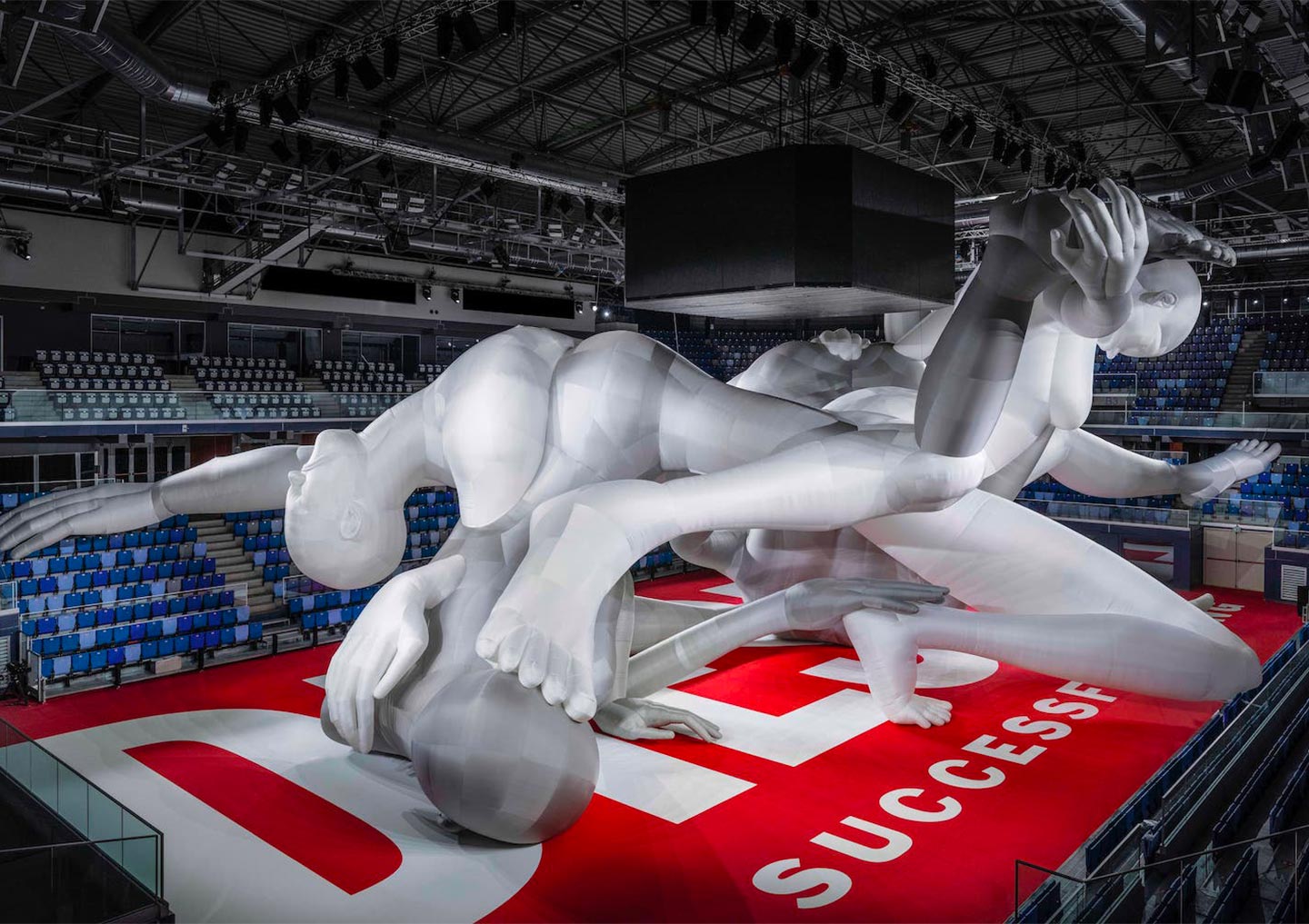
The Diesel spring-summer 2023 show took place in a room full of massive, vaguely sexual inflatable sculptures
While waiting for Glenn Martens’ new Diesel maxi-show, we caught up with an adjunct professor at Università degli Studi di Milano, Mattia Bertocco, to trace the history of the Italian global brand and discuss his book Diesel: Jeans, Comunicazione, Cultura.
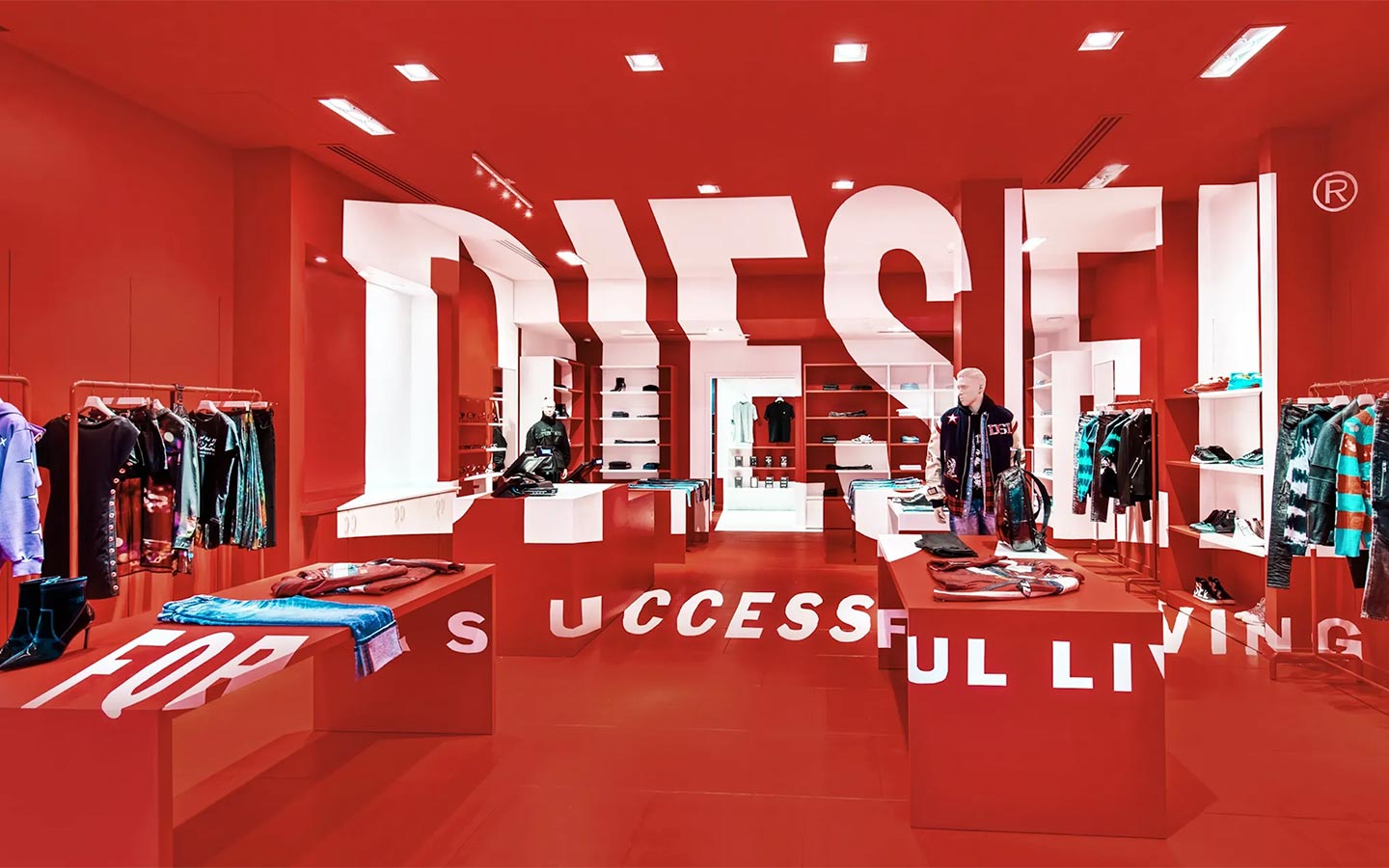
The Diesel logo inspired the label's new pop-up store concept launched in February 2021 – it was envisioned by creative director Glenn Martens
When was Diesel born?
Mattia Bertocco: Diesel was founded as part of a think tank, the Genius Group. It was never a holding company but just the ‘idea’ of Adriano Goldschmied, known as the ‘Godfather of Denim’. The ‘Premium Denim’ creator hired young people (like Renzo Rosso and Karla Otto, to name a few) and created different lines that he delegated to various collections, including Diesel, Replay, and Katherine Hammett. It was a historical moment, 1978, when this ‘intelligenza’ would become a fashion success. Renzo Rosso later became the owner in 1985. For 7 years before that, he worked as the company’s production director, then took over and continued to run it independently as the 100% owner. Soon after, Diesel launched a Kids’ Line called ‘Dieselito.’
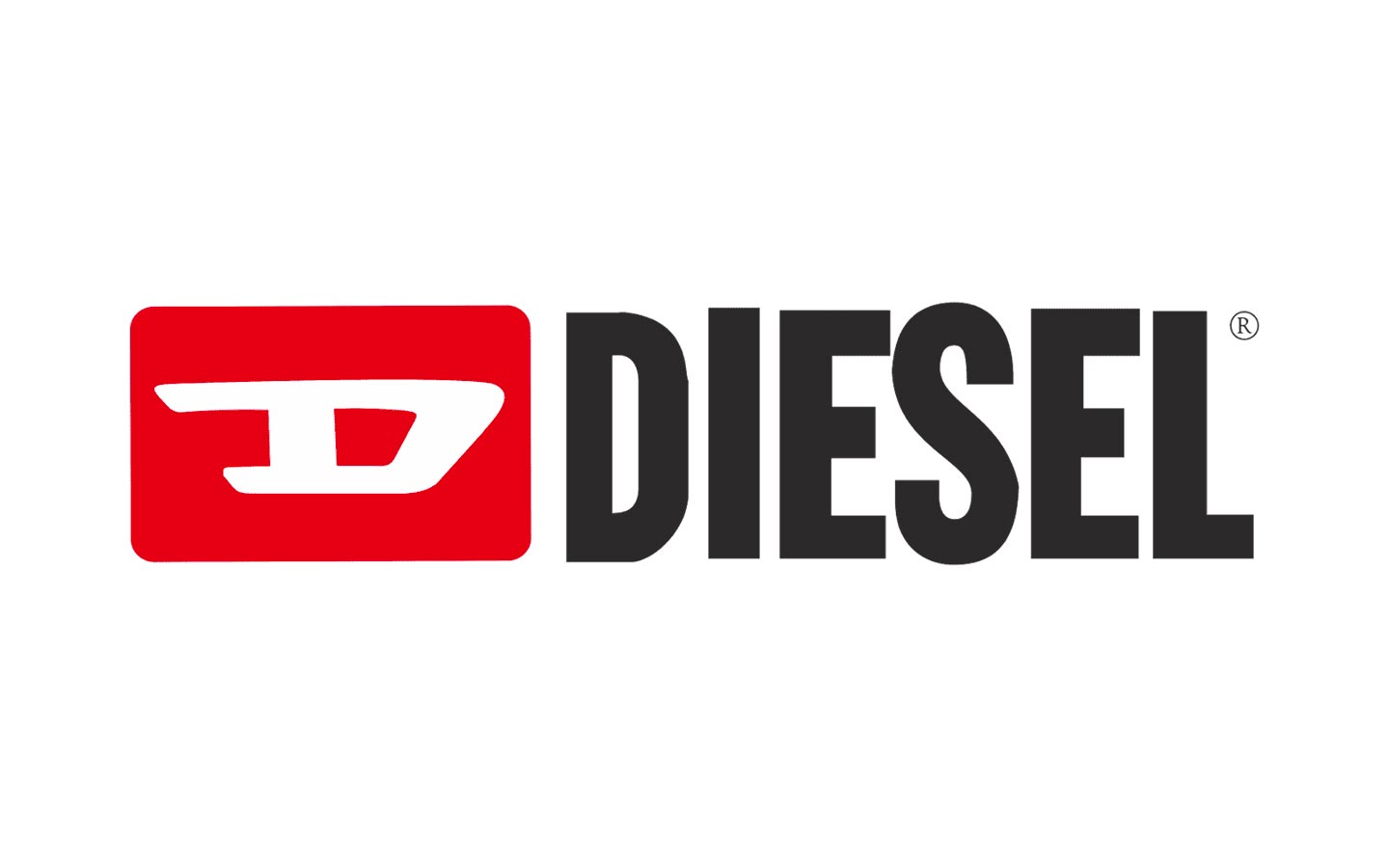
The first Diesel logo
What was the historical and cultural context?
M.B.: Diesel came along at a time when the market was saturated. However, they filled the gap in shipping time. After Second World War II, denim imports to Europe were hampered by both logistics technologies and the unpredictability of expansion during the 1950s. Historic Milanese shops like Surplus on Corso Garibaldi – a landmark for US war materials – sold the exported jeans, leading to very long queues of young people outside the store. Levi’s was not yet organised to leverage the expansion as it did not yet have a European production site, which created a gap for Italian brands to penetrate the market. These Italian labels were reminiscent of the American world through a kind of falsification that began with the choice of their name. In my book Diesel: Jeans, Comunicazione, Cultura (page 56), a list of Anglo-Saxon origin names – such as Roy Roger’s, Cover, Vagabond, and Swish, to name but a few – reminded the American world, also thanks to the few information tools available at the time. That’s how the Italian denim takeover began.
How did Diesel’s vintage-looking jeans come to be?
M.B.: Its worn, old-looking product is part of Renzo Rosso’s famous ‘brilliant idea.’ Unlike Levi’s, Diesel wants to be fashionable in its own way. To communicate these ‘vintage jeans’, they made a campaign that portrayed miners by evoking a fake old photo that looks like an old Levi’s campaign. The campaign alludes to Levi’s communication, which is always perceived as a long-lasting product since they dressed miners in the 1800s. So, when Diesel started to make its products, they were treated to look as if they were second-hand because if something is already worn, it means it’s durable.
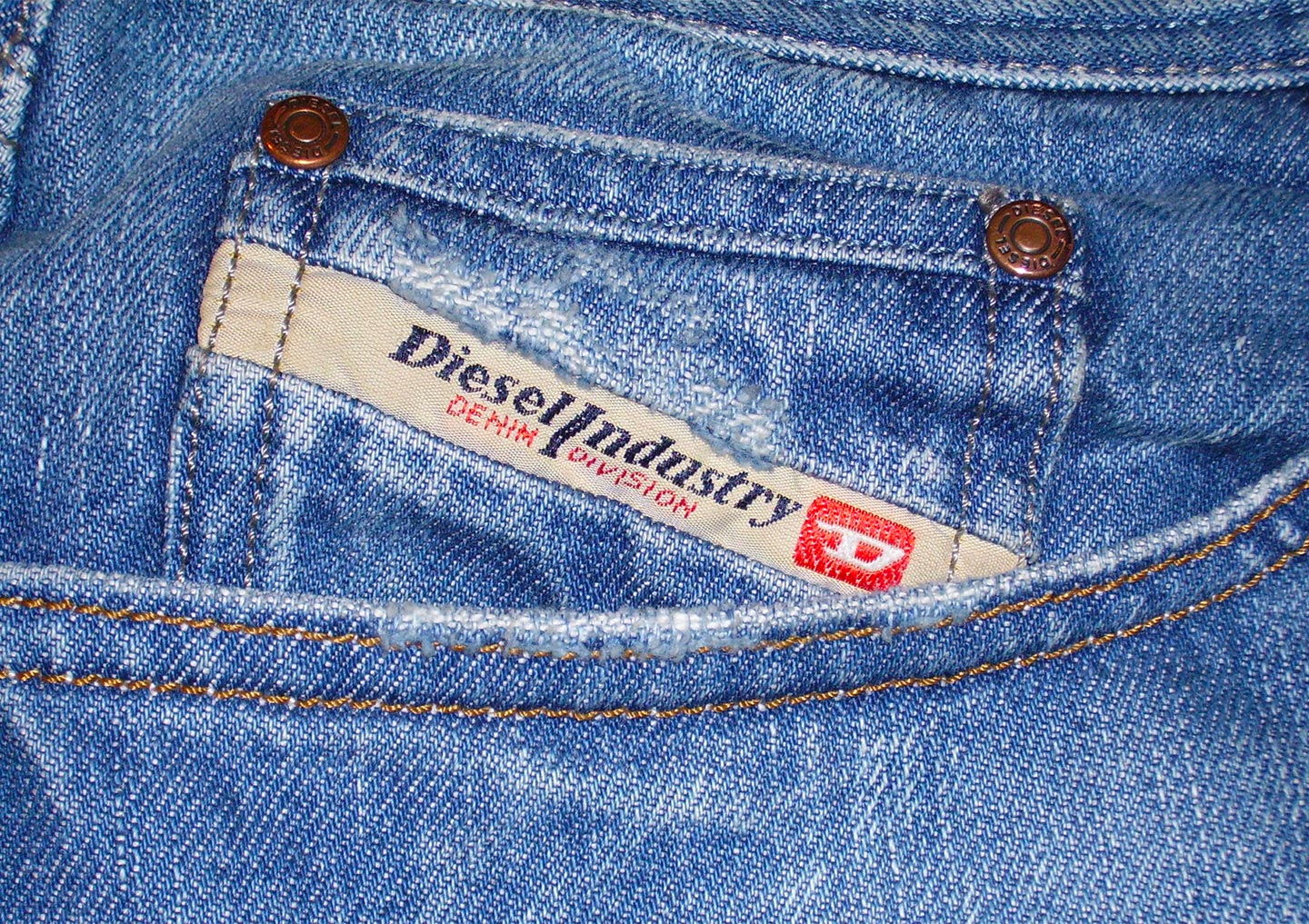
Vintage Diesel jeans
What is the meaning behind the name?
M.B.: Many myths and legends surround the name. It is associated with fuel oil and can be traced back to the historical context of the time. They were in the middle of the oil crisis in the 1970s, and Diesel, the so-called alternative energy for that time, had just been invented. Because it was an international, trendy word at the time, and especially because it was something innovative, Renzo Rosso and Adriano Goldschmied decided to name their company after it.
What does the community stand for at Diesel?
M.B.: Rosso applies the concept of ‘community’ to both consumers and businesses. Starting from the geographical location of its headquarters in Breganze (Veneto), from where it has never moved, the company has never followed the flow towards Milan, where most fashion houses are based. This created an international pool that, starting with the important figure of Wilbert Das, who was the brand’s creative director for 15 years, drew a whole host of international talent after him, all of whom moved to the area and created a conclave comparable to a ‘Silicon Valley of fashion’. Internationality, one of Diesel’s pillars, was felt strongly through the telephone exchanges in the main office; they introduced themselves as ‘Diesel Planet’. This ‘planet’ brought a sense of belonging that Renzo built both among customers and in the house. He created a reality within a reality with room for a kindergarten, a gym, and various organised activities in the new Marostica headquarters. Diesel’s strength, which is the success of its revival, is that it has returned to its own identity and originality, not understood as a celebration of individuality but the individual as part of a whole.
What was the secret behind the brand’s worldwide expansion from a small town in Veneto?
M.B.: Since its inception, Diesel’s approach was to be global. Their method was not: “I am an Italian company, and I want to conquer the world”, but rather: “I am a company of the world, and I will conquer it.” From the beginning, the intention was to appeal to young people who knew English, who travelled abroad and who were all the same from Europe to America. With English at the forefront, this cross-community strategy has been the game changer. Among the brand’s most extravagant campaigns is ‘Magic 55’, a ‘94 commercial aired on Rai and Mediaset programming. Entirely in Japanese, it featured a detergent called “Magic 55” (5 is Renzo Rosso’s sacred number, and in Breganze, there are floors 1, 2 and 5, so to speak, because that’s where the office is) that transforms any piece of clothing into a Diesel garment. Without subtitles, the Japanese language leads to a discourse of alienation, as does English. So, we are dealing with a communication that excludes you but still creates this inclusion for a specific, targeted audience. After Japanese, French was also used as the only possible language in an advertising campaign, which concluded the only two moments of language change. English was always used for the remaining campaigns as the brand was born for a global market.
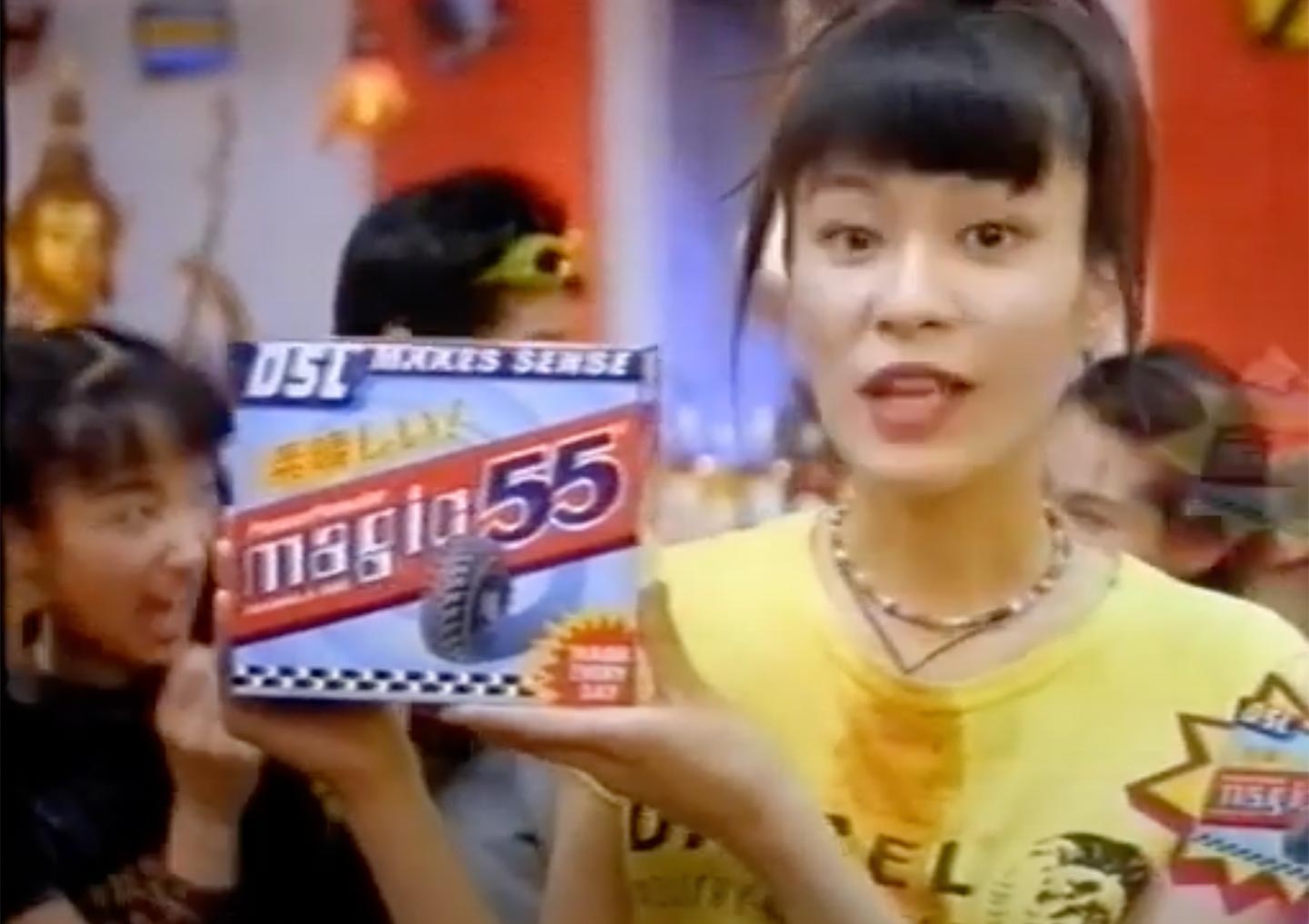
‘Magic 55’, a ‘94 commercial aired on Rai and Mediaset programming. Entirely in Japanese, it featured a detergent called “Magic 55” that transforms any piece of clothing into a Diesel garment
Levi’s vs Diesel: Enemies or Friends? How has the northern Italian company competed with the historic inventor of the five-pocket?
M.B.: Indeed, they are enemies. Levi’s represents the historical development of jeans, the first industrialised brand and the company that still holds the paradigms underlying the denim narrative (sailors, 19th-century gold miners and work clothes) in the collective imagination. If the American label has this narrative power, on the other hand, it needs the fashion side that Diesel fulfils. There was no competition until 1991, when they opened their first shop in New York City, right across the street from their main competitors. The shop was huge and stretched over three floors with DJ, with all washes and different cuts. This is how Rosso introduced fashion jeans and literally threw Levi’s under the bus. So, they are enemies but also friends because they move in different price ranges and positions. However, challenging a giant like Levi’s is definitely one of the achievements Mr Rosso can be most proud of.
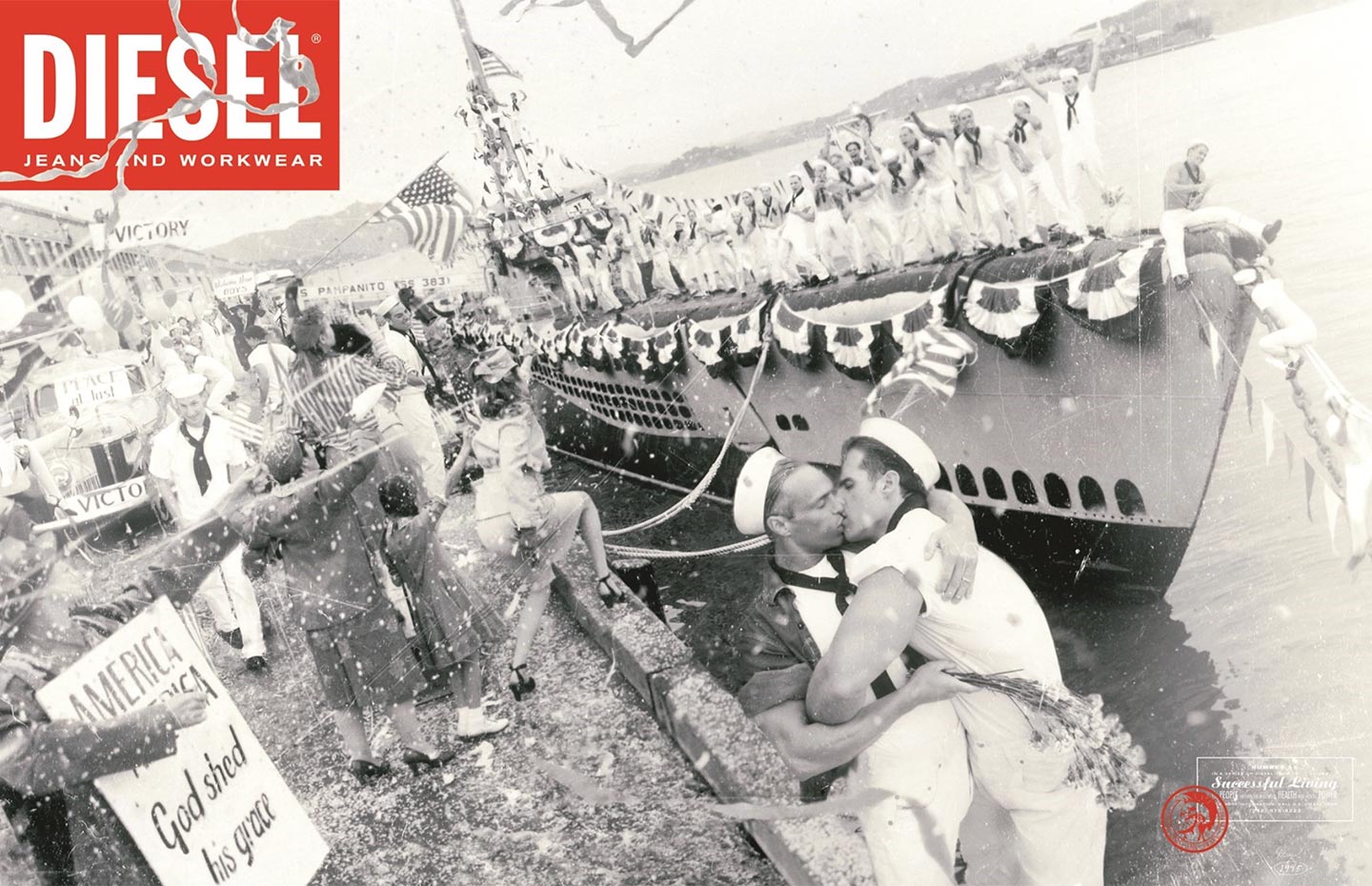
Two male sailors are locked in a kiss as their shipmates celebrate the end of WW2: this is a scenes depicted in one of the 90s Diesel campaigns
Please, tell us about the ‘For Successful Living’ project.
M.B.: ‘For Successful Living’ is a macro label where several campaigns from ‘94 onward fall under it, where within it is the famous “Historical Moments” project. This campaign took images of critical moments, such as the Yalta Conference, editing them in Photoshop. The changed photos showcased great leaders – including Churchill and Stalin – with pin-ups dressed in Diesel. The goal was to bring certain historical moments to the public’s attention. In addition, Diesel has always fought racism; it was one of the first brands to use African models in a significant presence. For example, the ‘Lifestyle’ project has created a fanzine that illustrated the Western conquest of the Western world of Africa (and therefore, the reality of poor African slavery, everything that has been the history of our planet) turned upside down. It was an alt hist, where Africa was the developed country and Europe was the third world, all told with a time displacement; therefore, there are the MTV Music Awards, but they are held in Cape Town, and all the protagonists are black. This luxury is celebrated as if it were a glossy magazine.
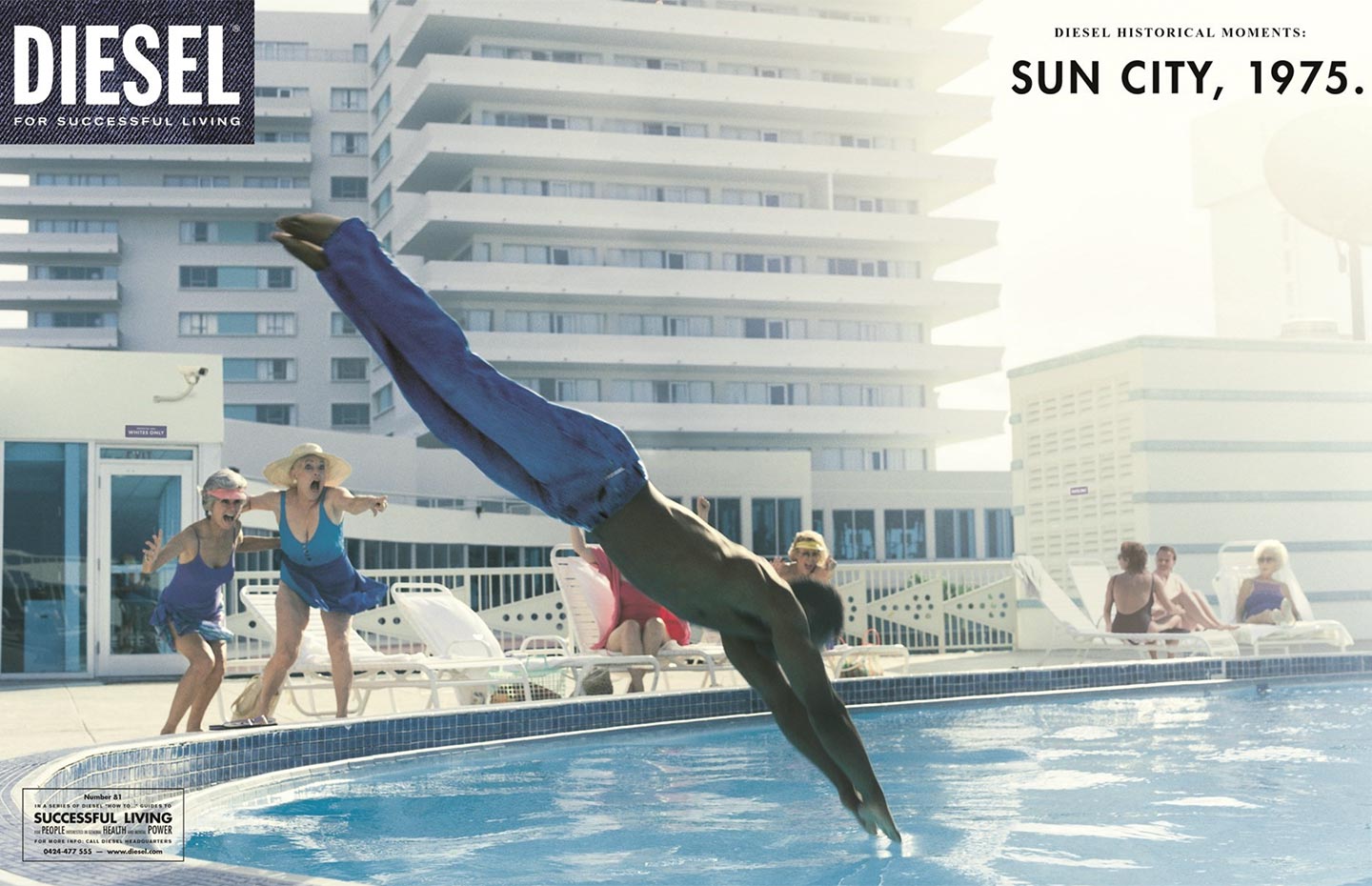
A 1990s Diesel campaign featuring a black man dives into a ‘whites only’ pool in an apartheid-divided South Africa
How far has communication influenced the success of products?
M.B.: Storytelling is a predominant part of Diesel; behind my careful research, it is the brand with the most remarkable written presence within the industry. They created communication where words were necessary. It was the starting point of my book: taking those texts and expanding on them. There is an ad campaign within Historical Moments with a postmodern quoting of a series of phrases by American presidents and vice presidents related to election campaigns. It is impressive, and with that storytelling, Diesel is what it is today; although it has a great product, its first strength was communication. It was unique, and storytelling is essential to Diesel. I think part of their return to success is their ability to communicate again with compelling storytelling with provocative prompts to engage their consumers.
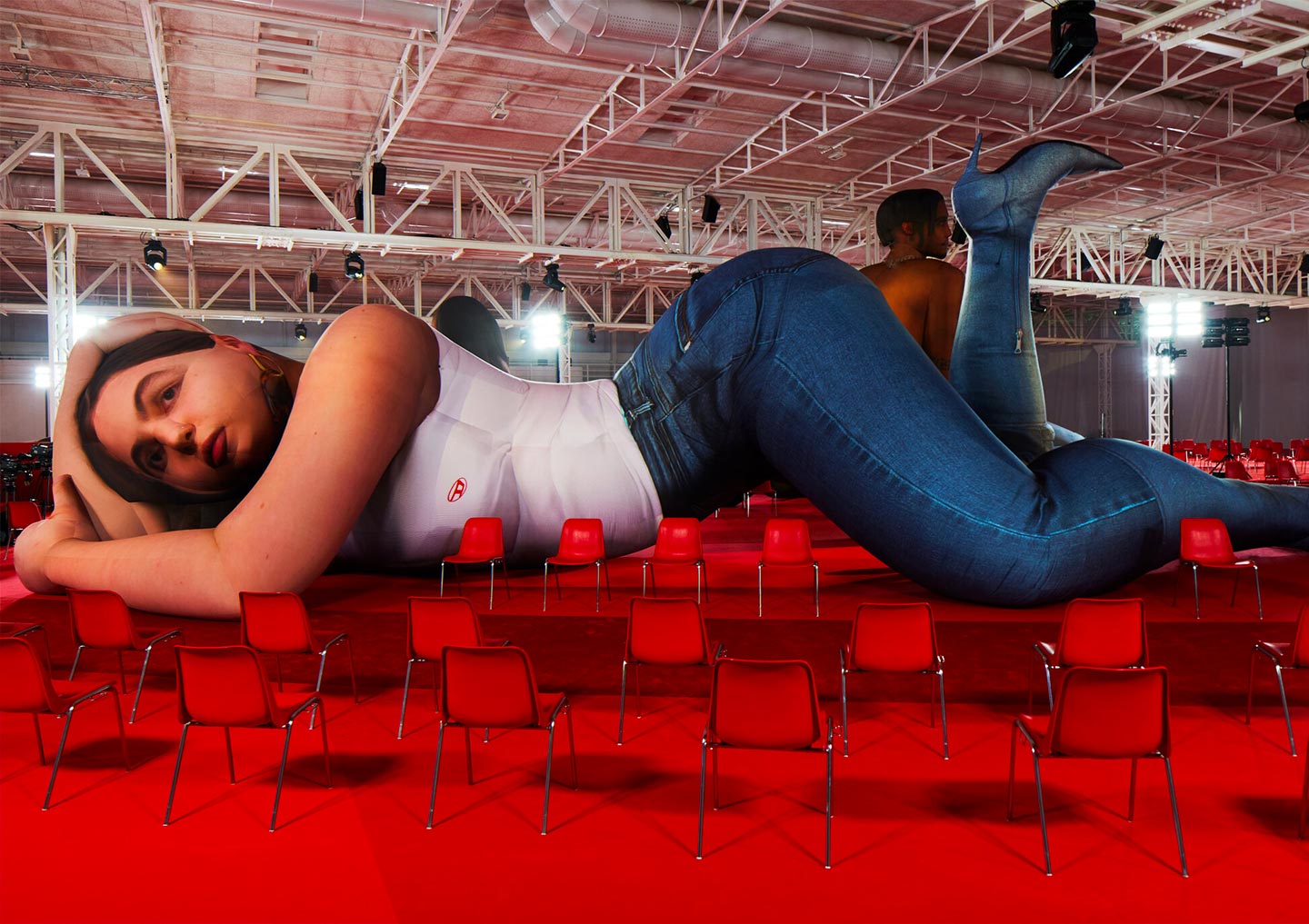
The venue of the Diesel autumn-winter 2022/23 fashion show by Glenn Martens
How Diesel became cool again?
M.B.: The projects under the ‘Red Tag’ label were specific collaborative projects, and the Diesel x Diesel project was the situation’s paroxysm. This collaboration with themselves led to a strong reflection for the brand because it was the moment they realised they had heritage. This was the first spark that ignited a revamp as, at some point, the brand had become standardised at the product level. To create a strong brand vision from the inside, you must be able to make a difference, and that’s what Glen Martens did. His approach started with the product, and then came the rest. He revolutionised the cuts of jeans, he created hyper-volumes and boot jeans coveted by the whole world. Next came communication. He brought back the iconic “D”, a monogram they had not used for a long time. It came from the archives and is now contextualised, modernised and brought back to life.
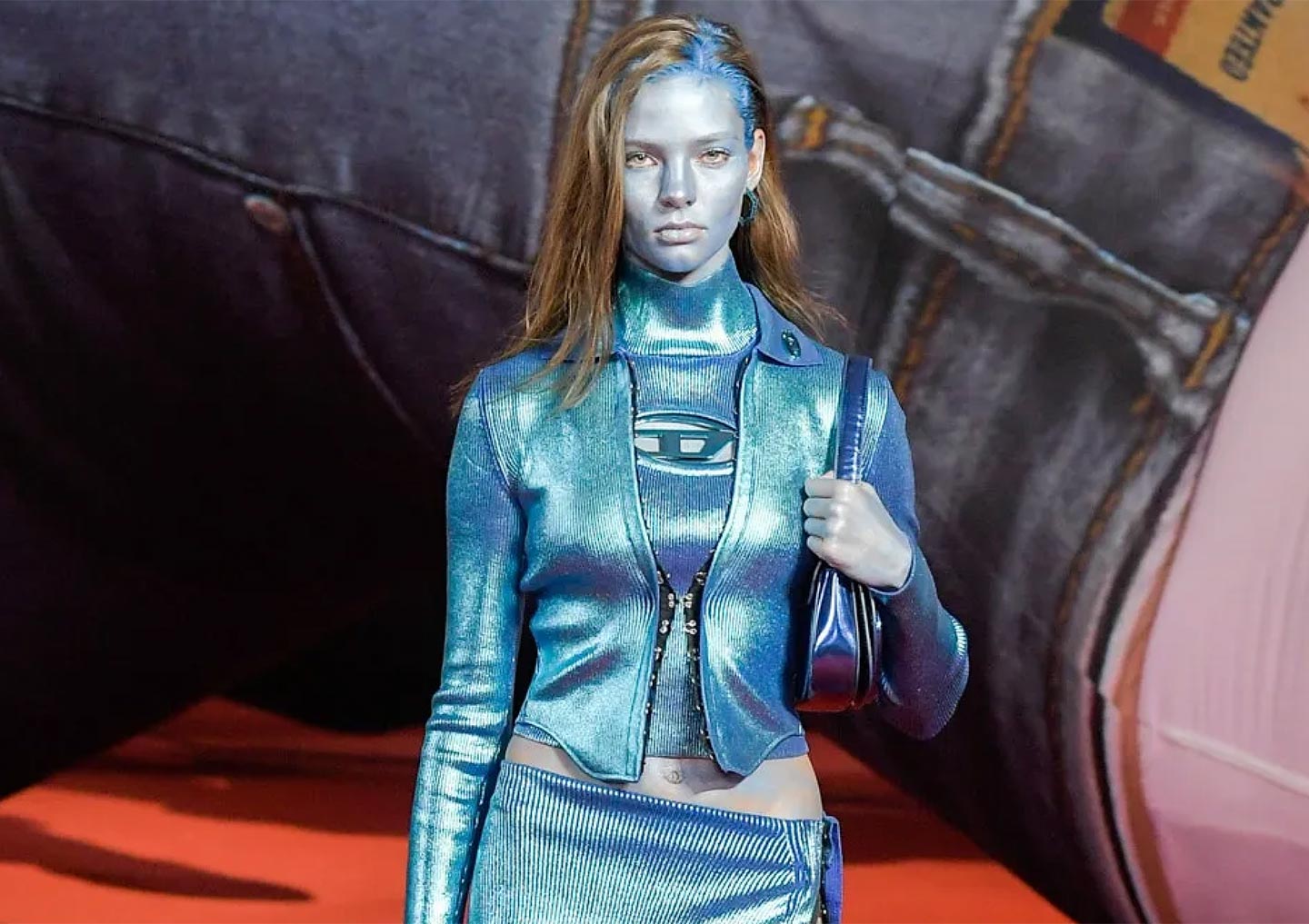
Glenn Martens brought back the iconic “D”, a monogram Diesel had not used for a long time

